









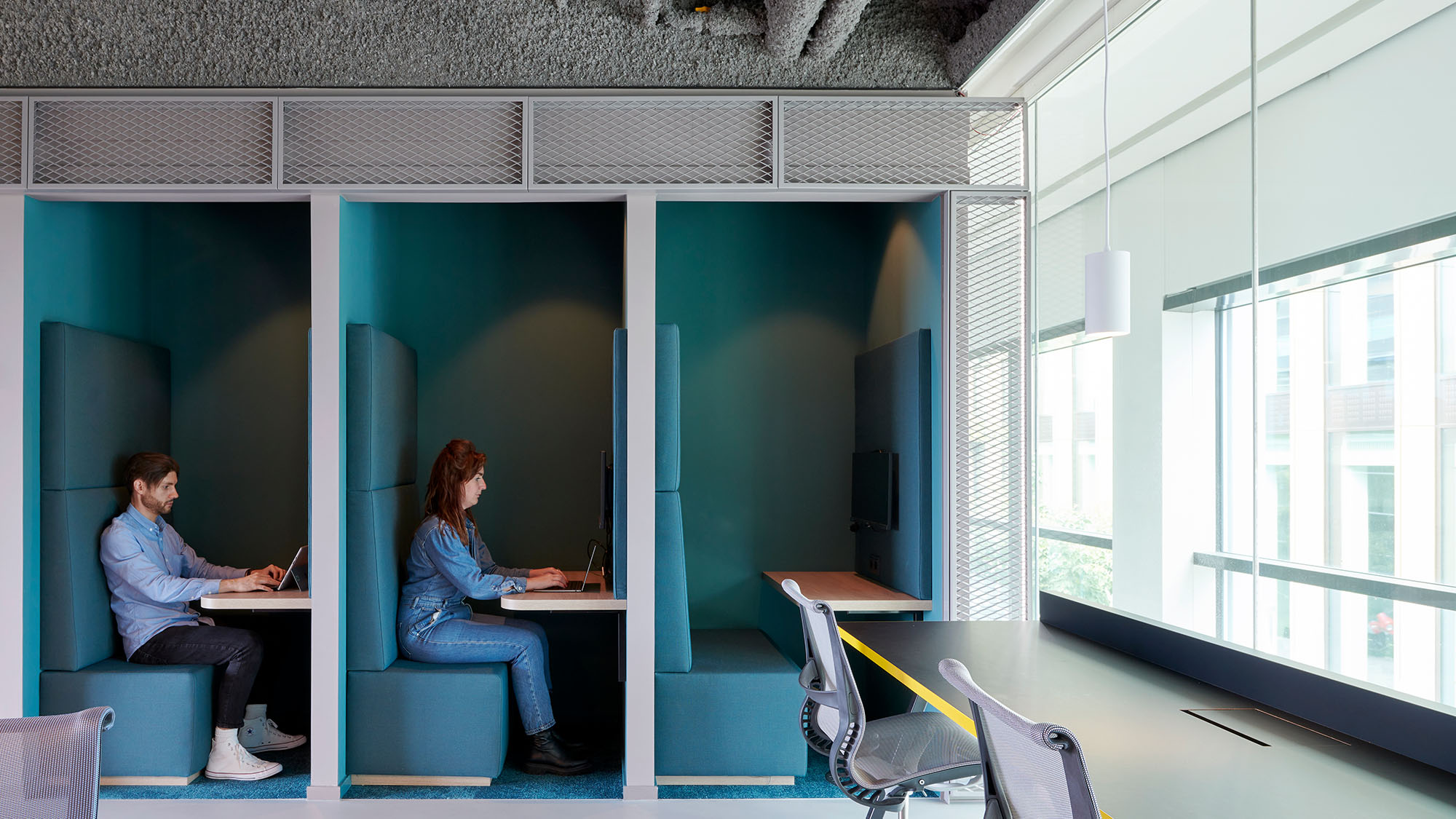
Are you looking for ways to create a more productive work environment? Look no further. This article explores office design ideas for focus spaces where individuals can work on important tasks without distractions.
If you’re looking for inspiration on how to design your next workspace, be sure to check out our 2024 lookbook. It features a wide range of focus spaces and more interior designs you can use as inspiration.
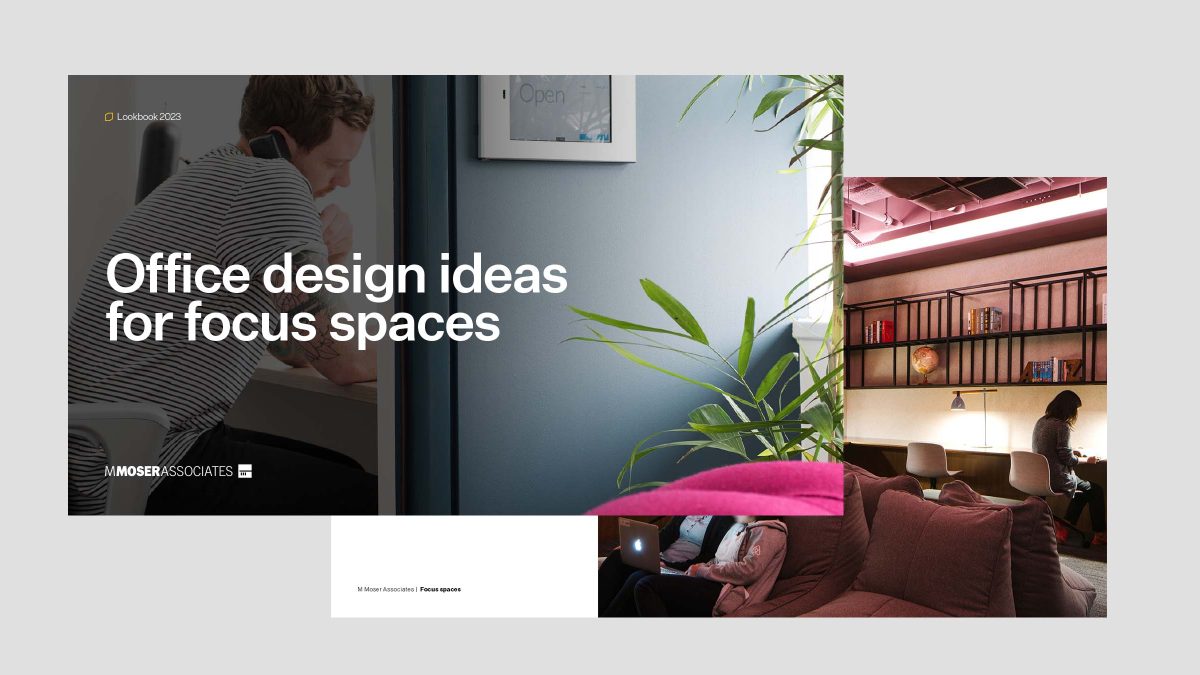
In today’s fast-paced work environment, having spaces where you can work without distraction is more important than ever. On average, information workers are distracted every 10.5 minutes. Afterwards, it can take up to 25 minutes to get back on track. Designers who create spaces for high performers should take this potential loss of attention seriously.
We need focus spaces to counterbalance collaborative workspace. Although the office has become a place primarily for being with others, people work together more effectively between bouts of focused work. For instance, most people prefer to go away and process information before coming back together to share their thoughts.
A focus space is a room or area in an office designed to allow people to work on tasks that need concentration. They are typically quiet and free from distractions, making them the perfect spot to work on complex tasks – increasing productivity, creativity, and job satisfaction.
It’s vital to have a variety of focus spaces within the office environment to meet the needs of different people. Some prefer a quiet, isolated area, while others prefer a more collaborative environment with drop-in pods for private calls.
When we design for neurodiversity, quality focus options are essential. A good space plan will locate focus options away from the main circulation routes – chance encounters are a huge source of distraction. The office interior design will also consider how colour, material, lighting, and noise shape people’s experience. For example, a calm and quiet environment might include dropped ceilings, soft furnishings, and muted colours.
Sophie Foster, Senior Workplace Strategist, says focus goes well beyond aesthetics. “Focus, or what psychologists describe as flow, happens most effectively when people are relaxed, slightly challenged, and have the cognitive capacity to work on their task. Sensory design can positively impact flow by reducing sensory overload and promoting helpful emotions through the inputs we receive through sight, smell, taste, touch and sound”. Clearly, we can enhance focus quality by designing workplaces with the full range of senses in mind.
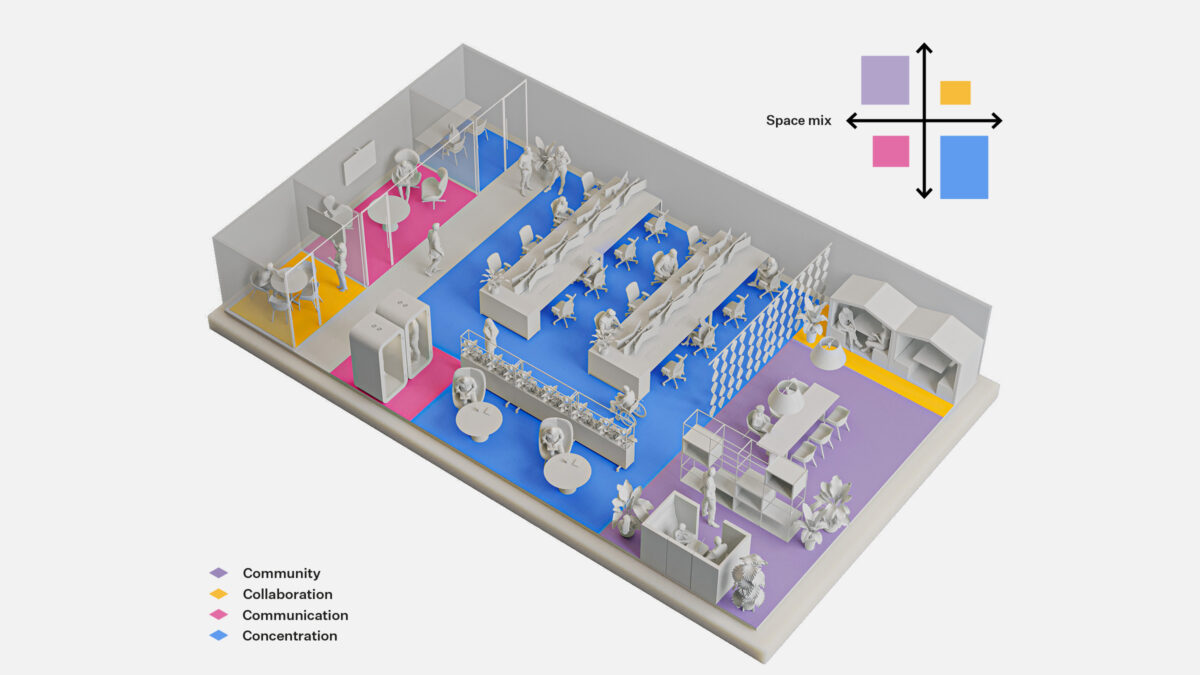
Here are 10 office design ideas to make your workplace more productive:
When designing a productive work environment, the ability to focus and minimise distractions should be top of mind. Quiet rooms allow employees to work independently without interruptions. These rooms are perfect for tasks requiring concentration, such as writing, editing or data analysis. Making desk reservations simple helps people plan their focus time.
While these environments are often open, everyone comes with the same purpose. Think of the quiet carriage on a train. There’s no material difference to any other carriage – but signage and clear expectations are practical tools for shaping behaviour.
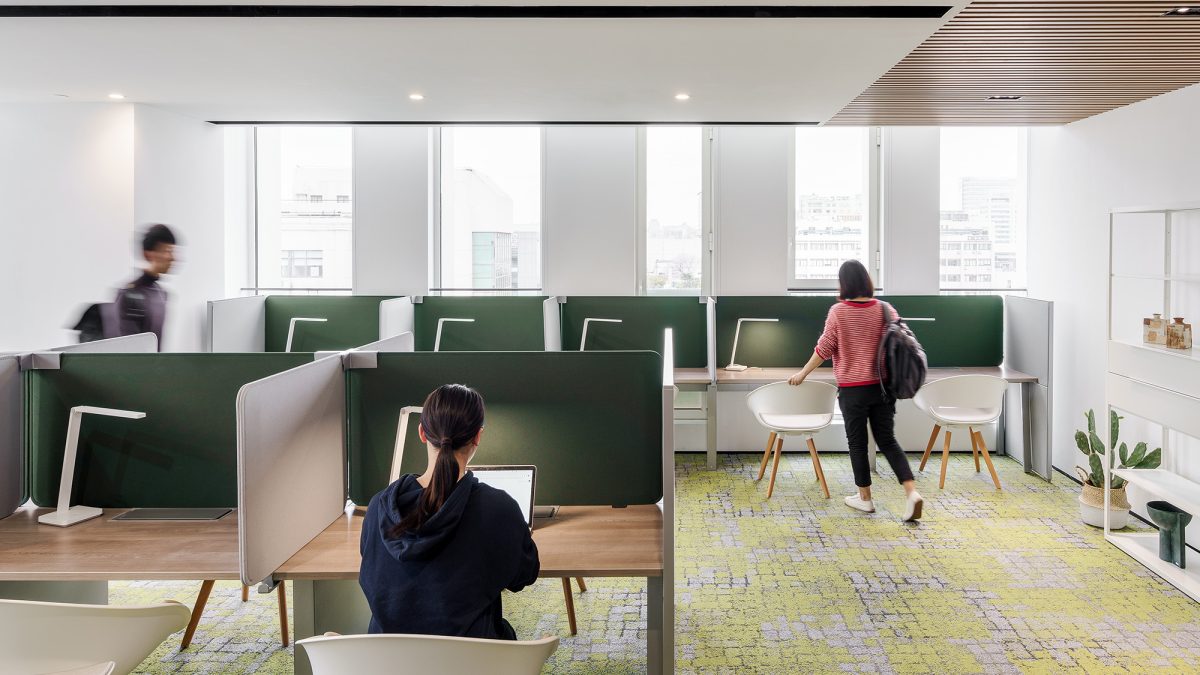
The need for small focus spaces is greater than ever. Focus pods let employees step away to make confidential calls without disrupting everyone around them. The design of these pods reduces noise and provides a comfortable and quiet space to conduct their calls, even if a lot is going on outside.
However, place them with care. The extra layer of glass combined with a lack of air conditioning can cause them to heat up quickly, meaning meeting rooms are better suited to more extended periods.
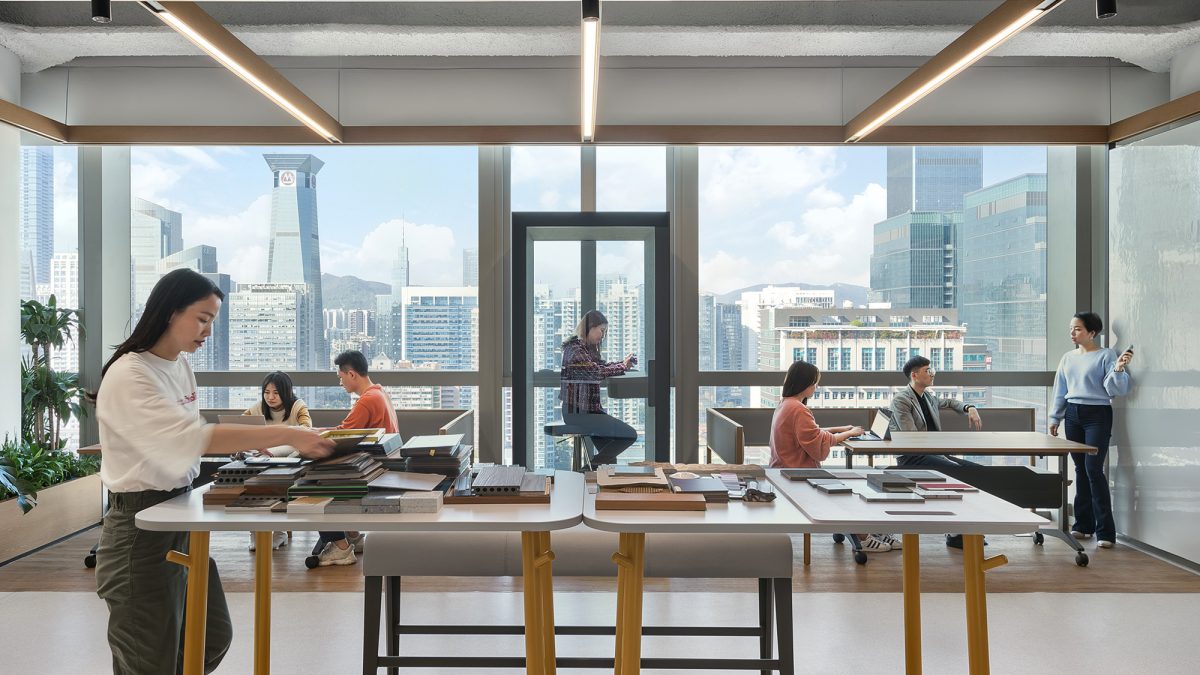
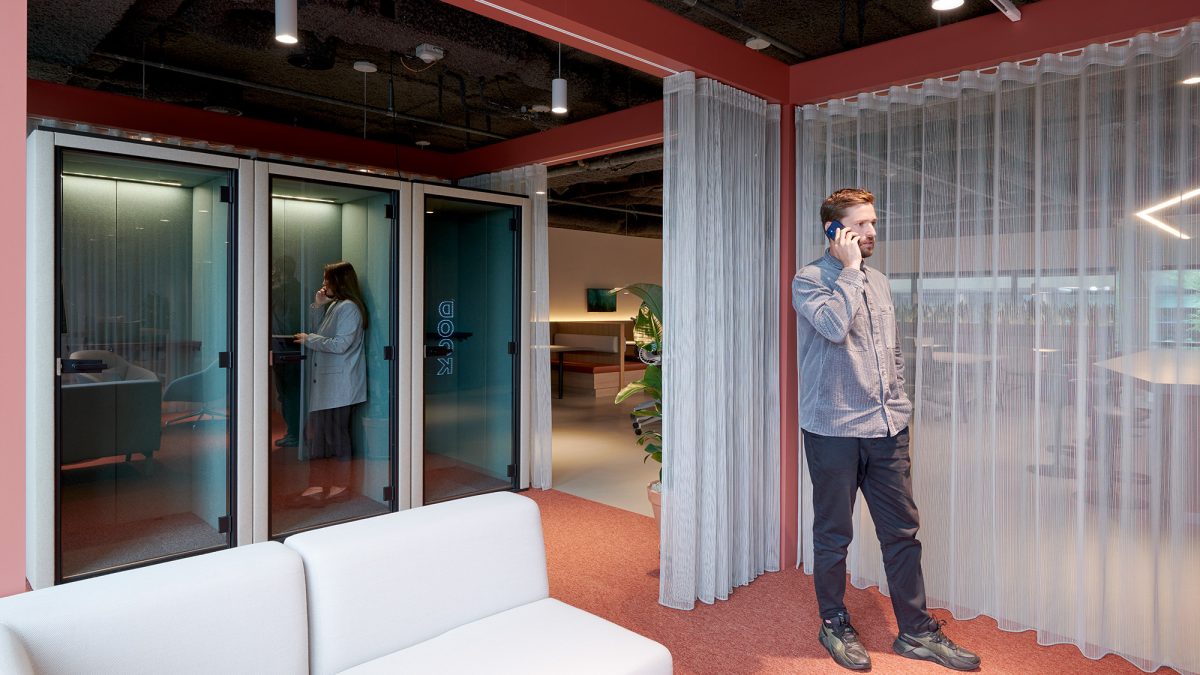
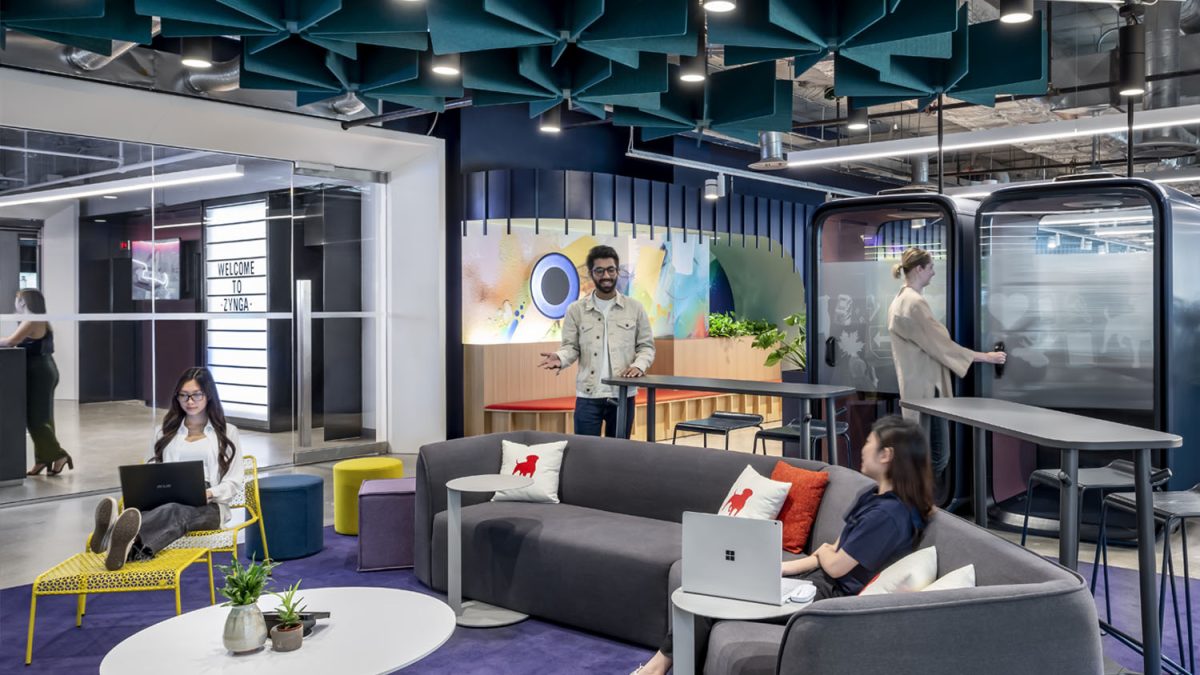
Acoustic furniture solutions and booths are excellent for small groups or solo work. Both offer a semi-private, enclosed space and furniture options can be easily moved or reconfigured. These flexible pods are perfect for small team meetings, quick conversations or working quietly on a project.
Many furniture products are modular and come with various screen height options. As a result, you can customise to the level of privacy required, even building niches or a medley of focus settings.
Soft materials absorb ambient noise, making people feel secure.
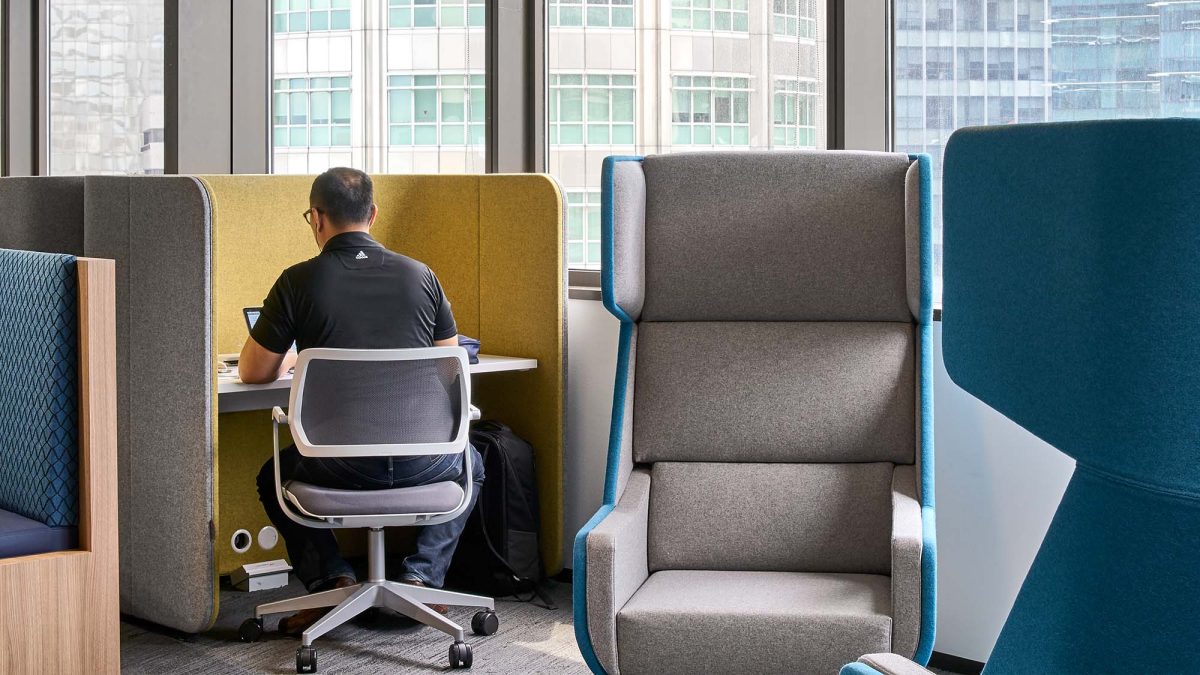
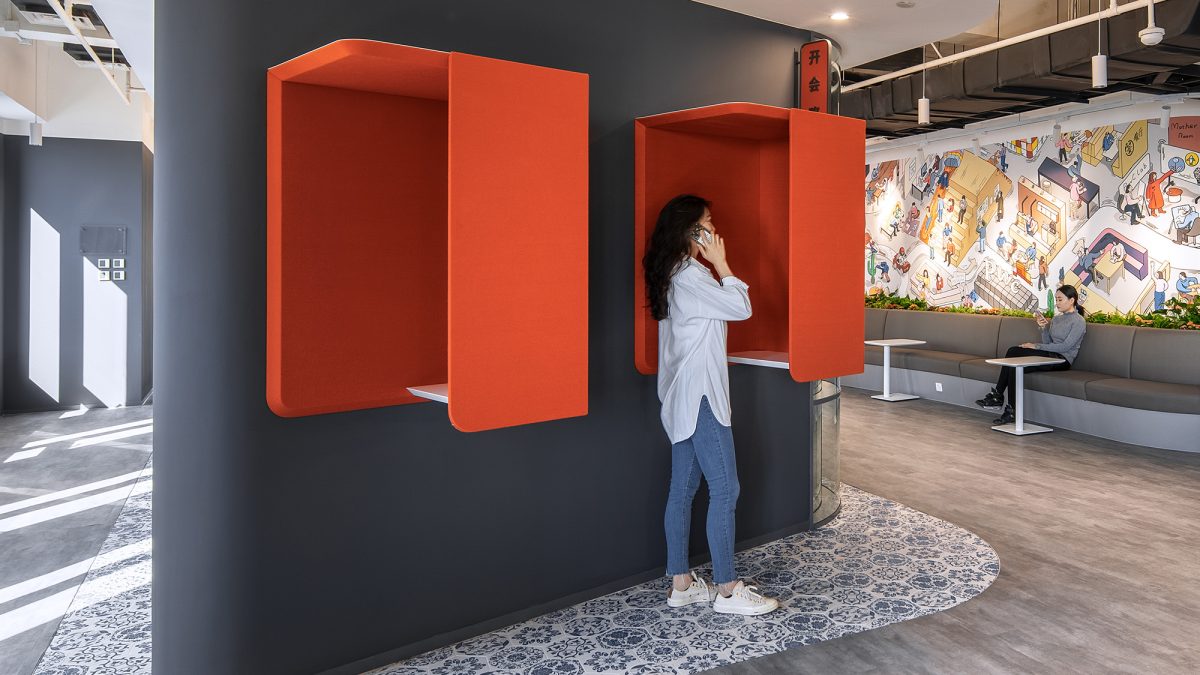
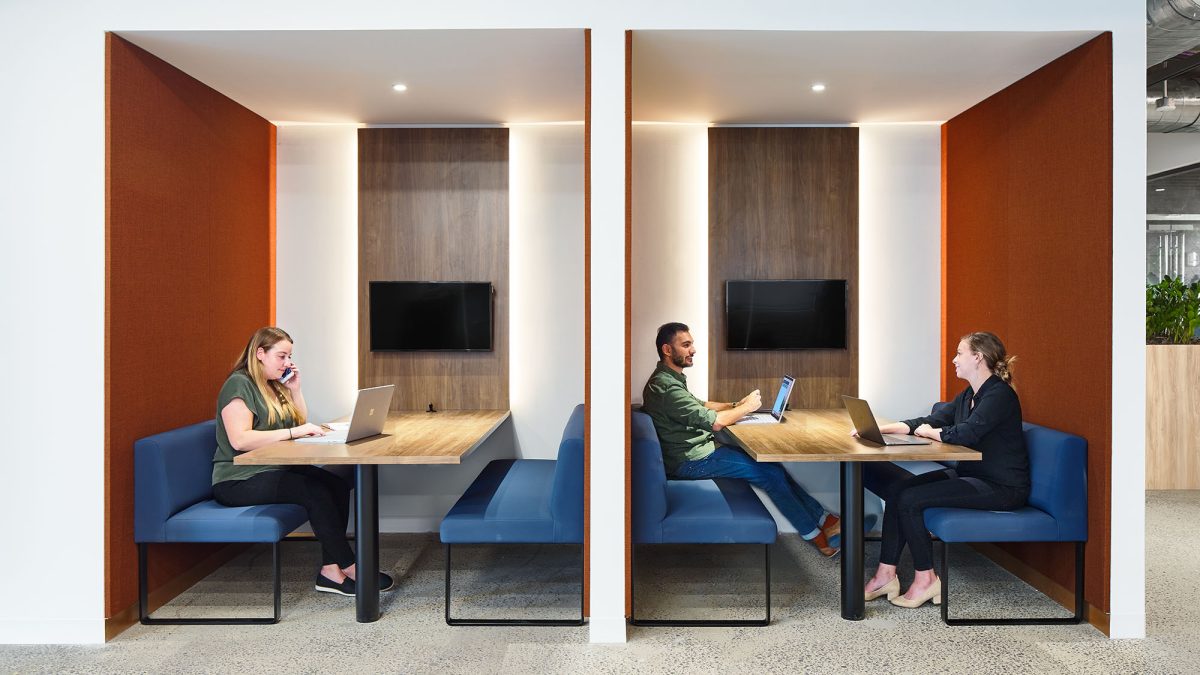
Meditation rooms are spaces to take a break and practice mindfulness. They often double up as faith rooms or spaces to nap.
Focus isn’t always about finding a quiet place to work. In fact, research has shown that a two-week mindfulness course improved attention by up to 16%. Therefore, it’s worth having options for ‘anti-work’ spaces too.
We design these rooms with natural materials, soothing lights, and sounds to support mental wellbeing. Ultimately, it’s about having a safe space to take a break and recharge.
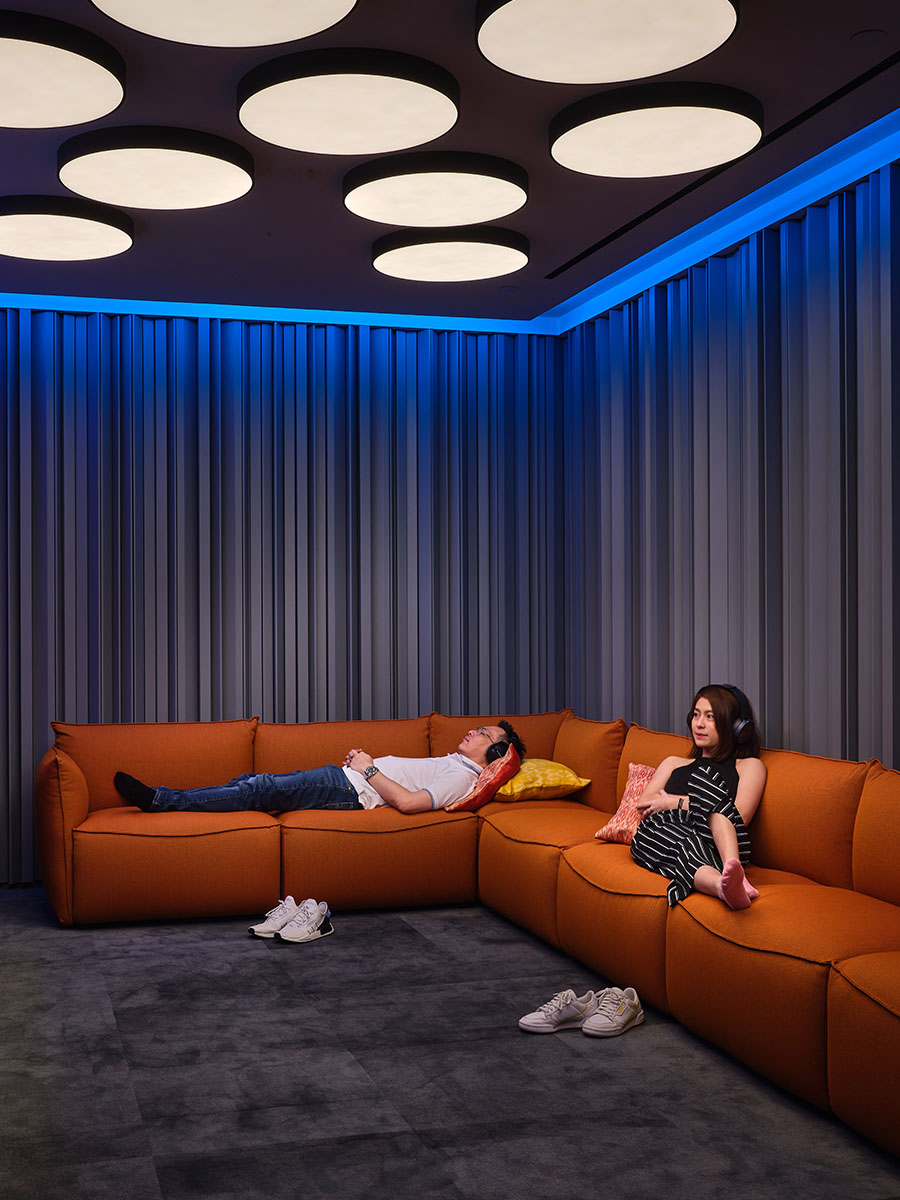
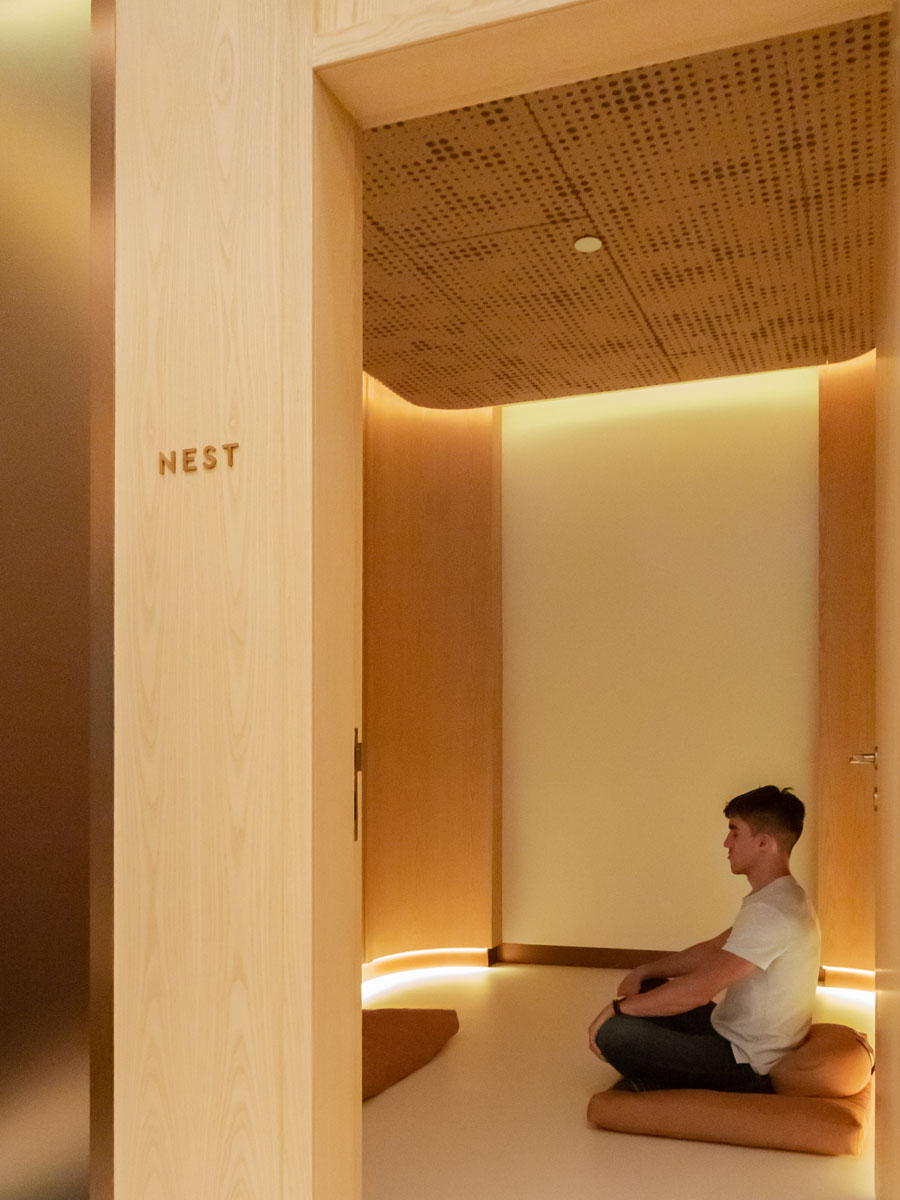
Standing desks are a great way to promote healthy posture and reduce the downsides of sitting. Adding screens to the desks provides an additional layer of privacy, allowing employees to focus on their work with fewer visual distractions.
Desks can also be equipped with sensors, so employees can easily find an available workspace as they enter the building.
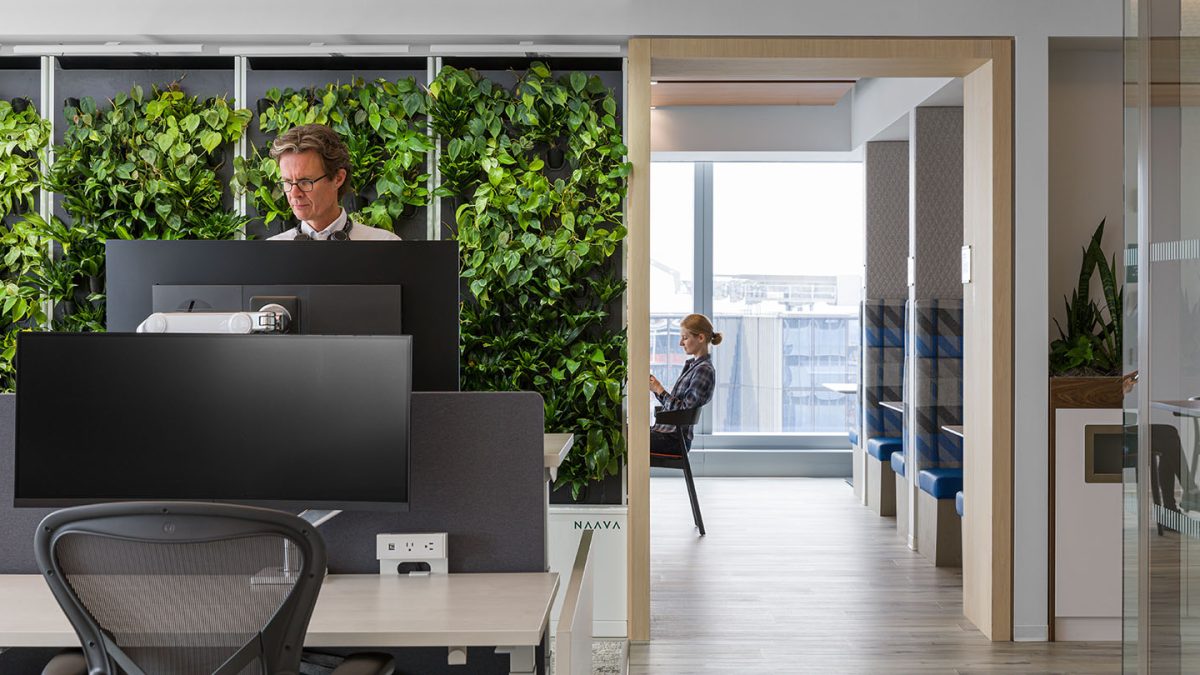
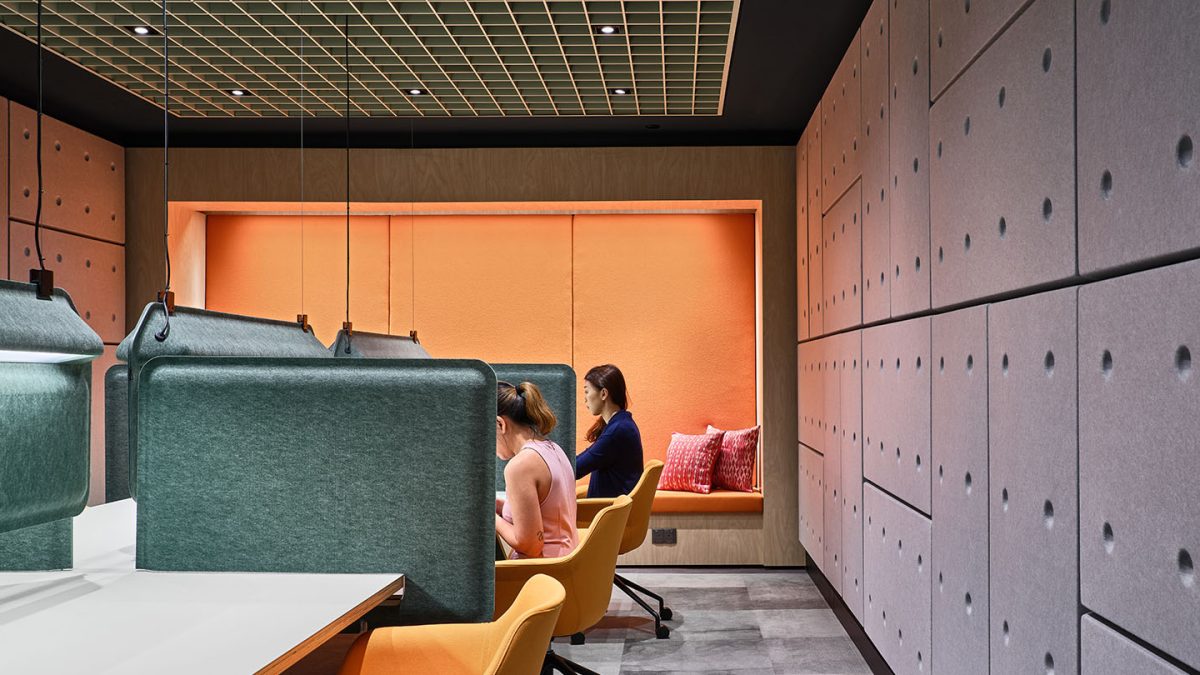
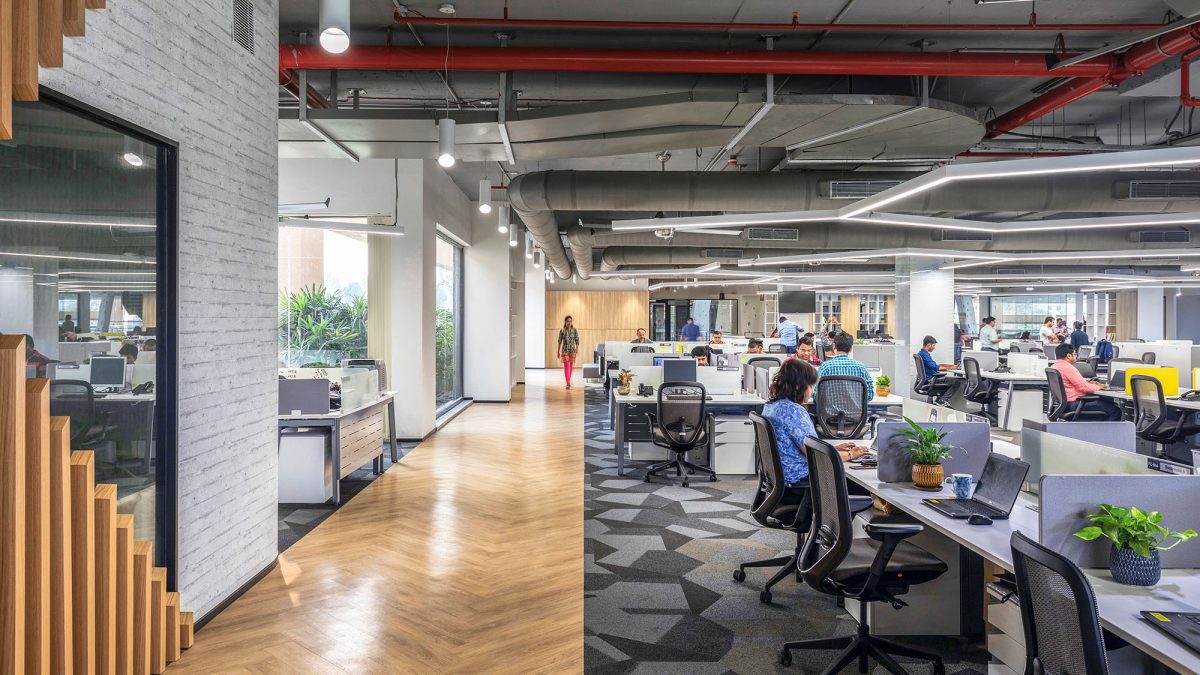
Libraries or reading nooks are comfortable and quiet spaces where employees can read, research or find inspiration.
Some companies we work with make these environments free of technology. This reduces the temptation to take calls or engage in other distractions. Even naming your space a “library” can encourage the right behaviours because people already know how to act.
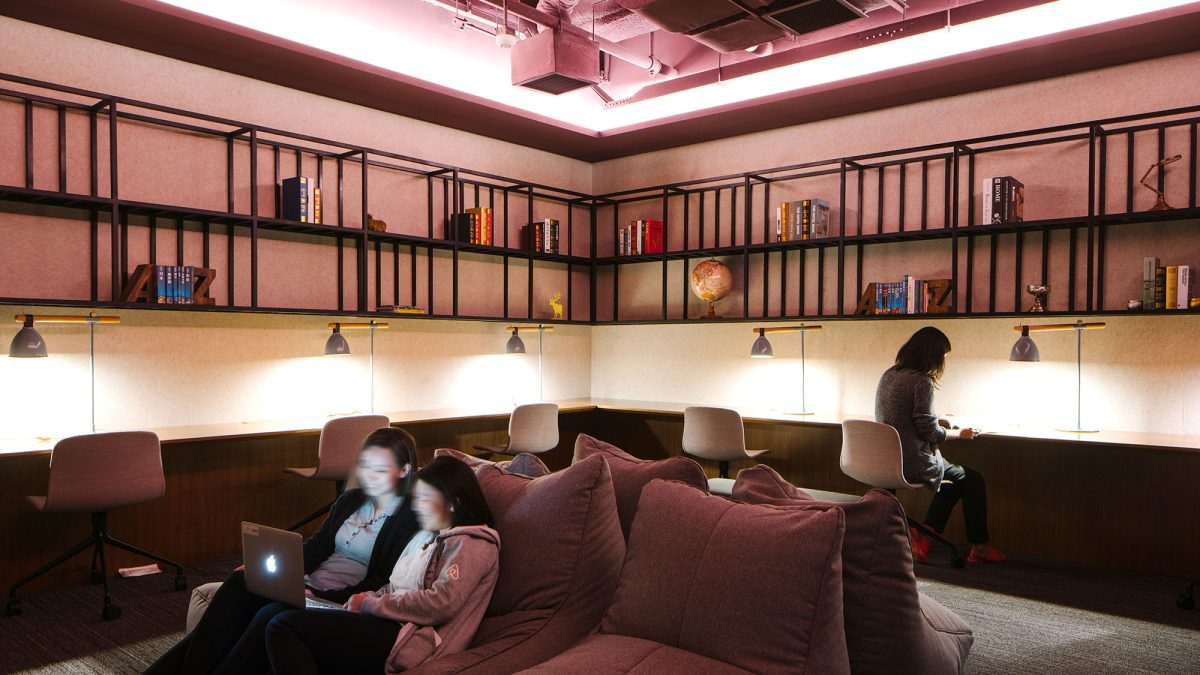
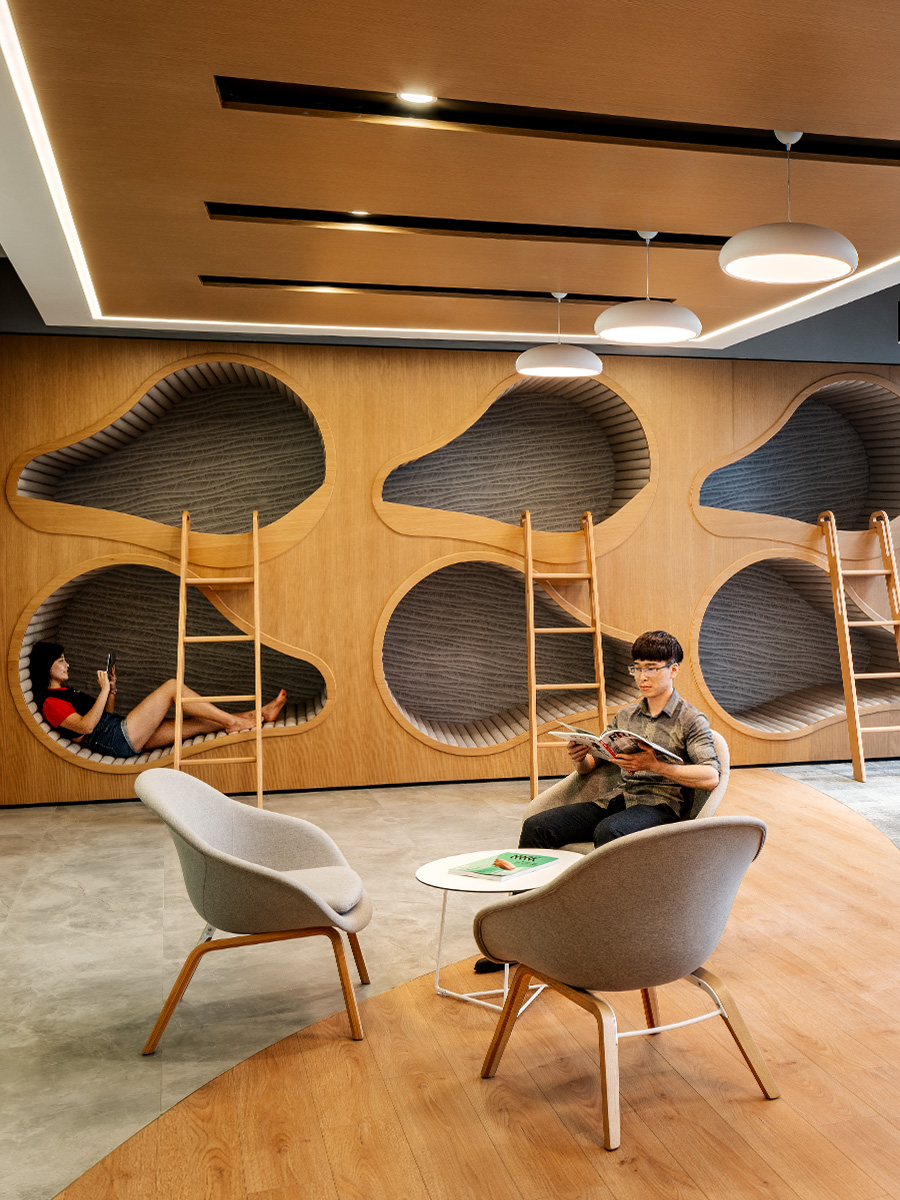
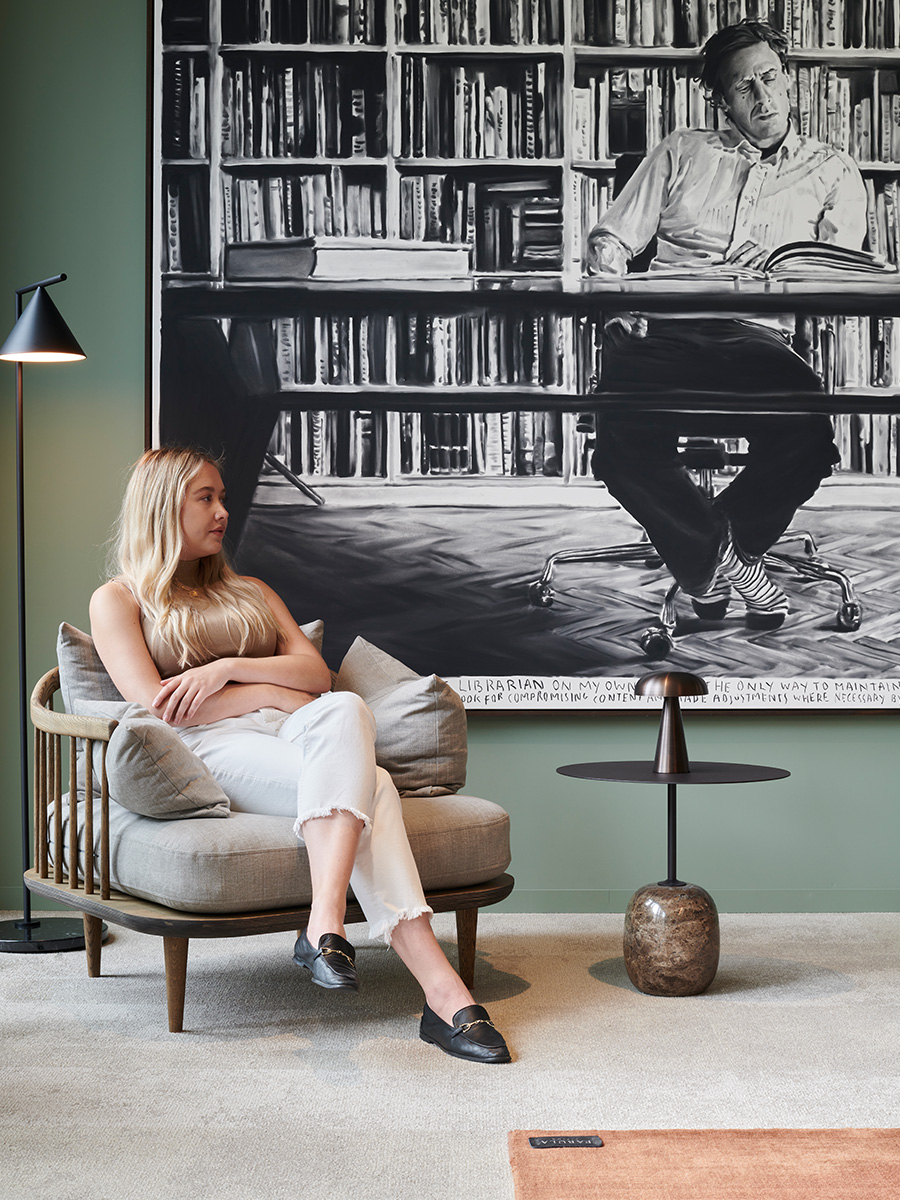
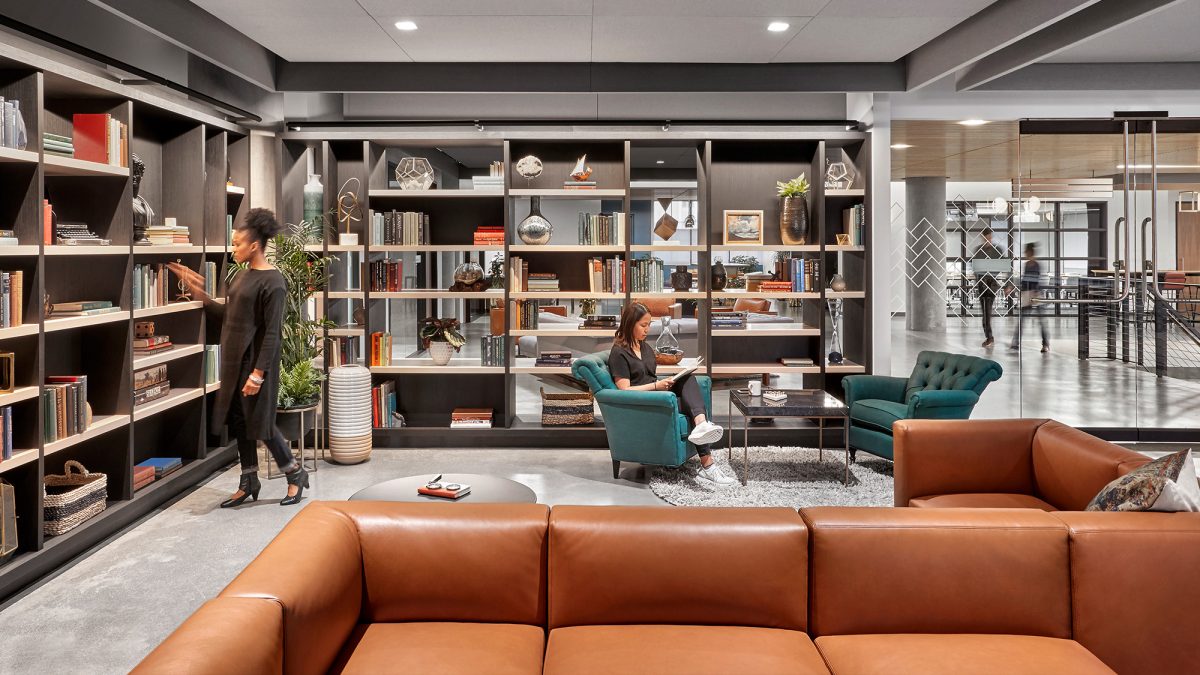
A small space is perfect for locking yourself away to do intensely focused work.
Lighting is crucial. Great views and abundant natural light can help provide a fresh perspective. If the room has limited natural light, provide controls that allow people to adjust it to their liking.
Neutral colours like white, beige, and grey are good choices, as they are not too distracting. However, adding colour in the form of an accent wall or decorative accessories can also be helpful. Blue has been shown to promote focus and concentration, while yellow can be stimulating. Consider textured materials to soften the acoustics and artwork for added interest.
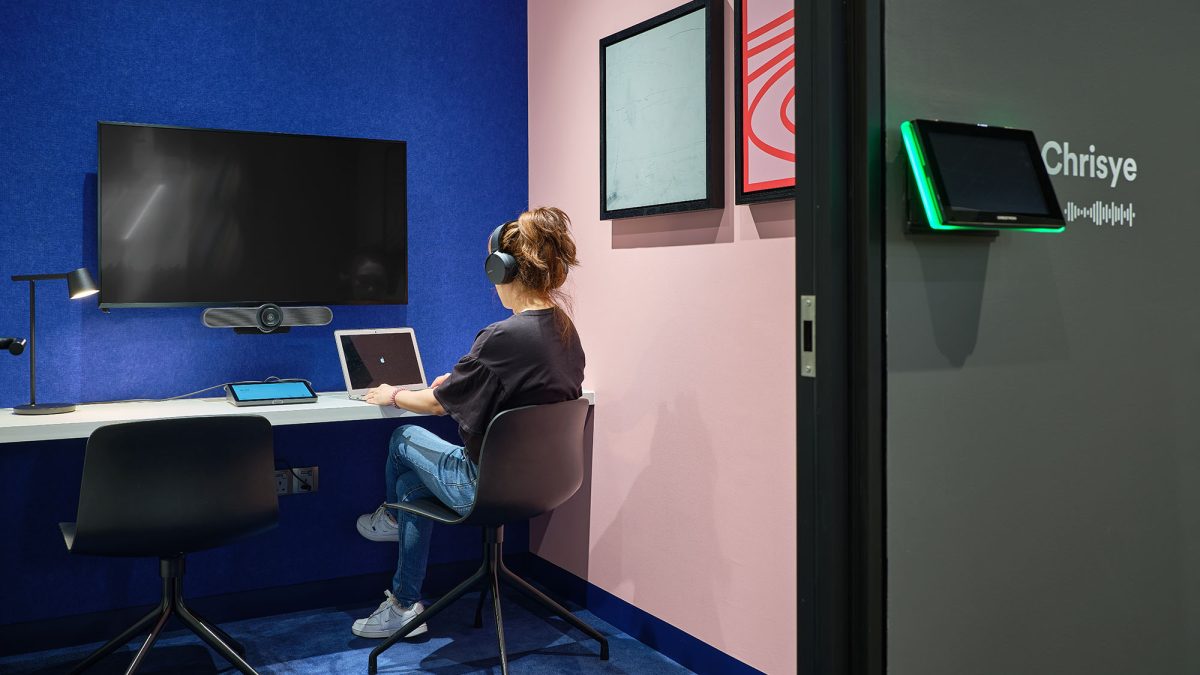
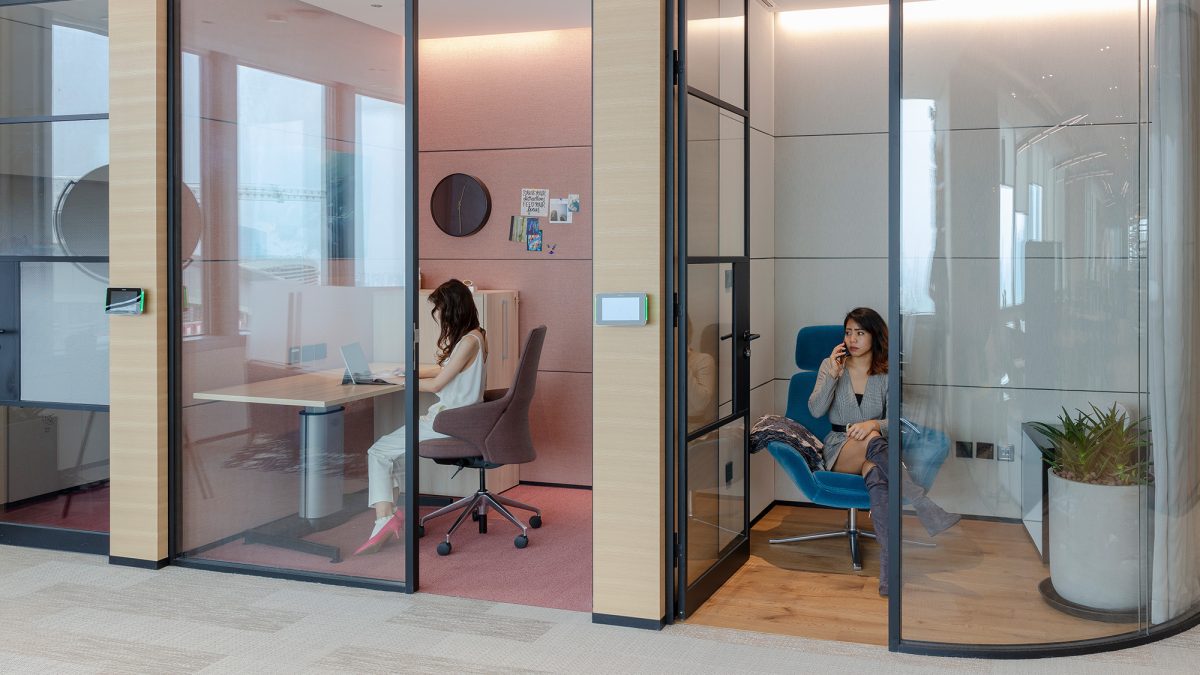
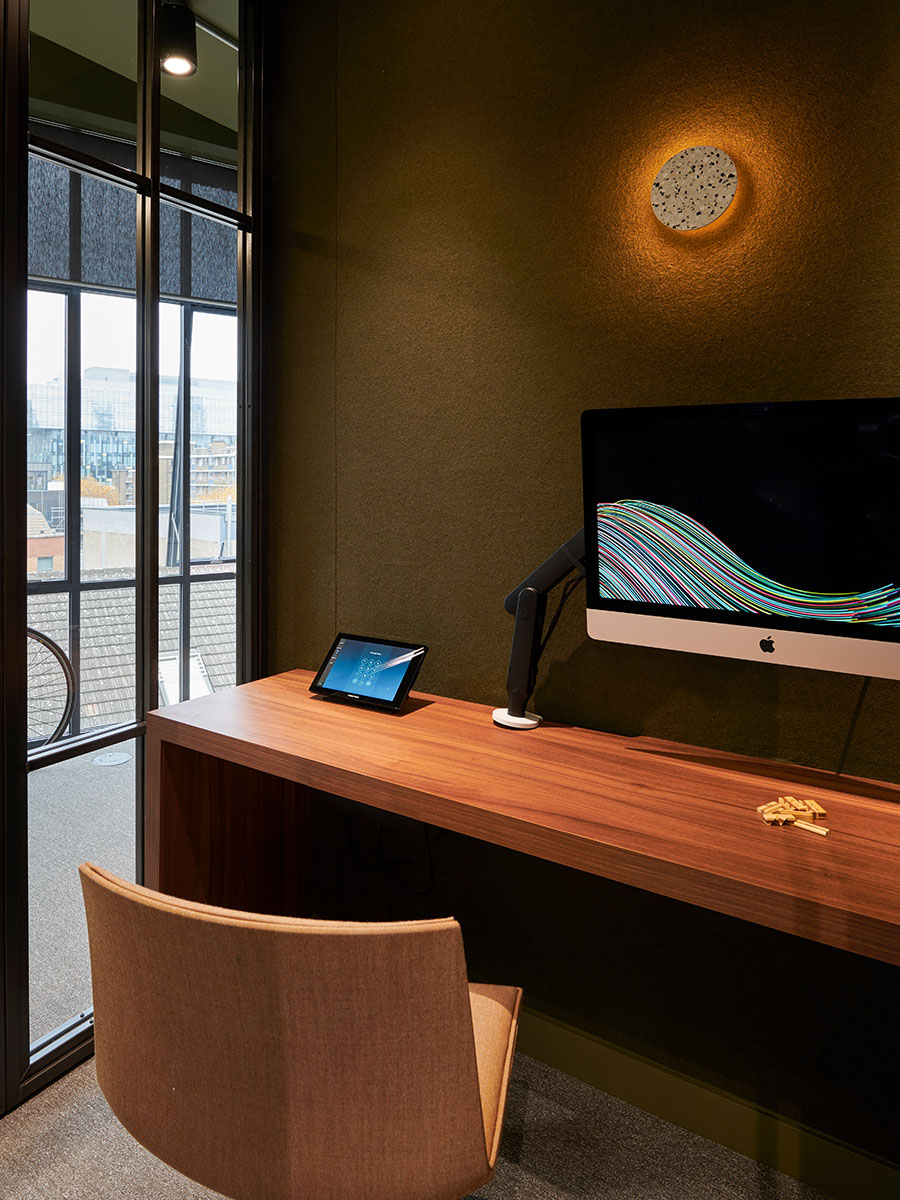
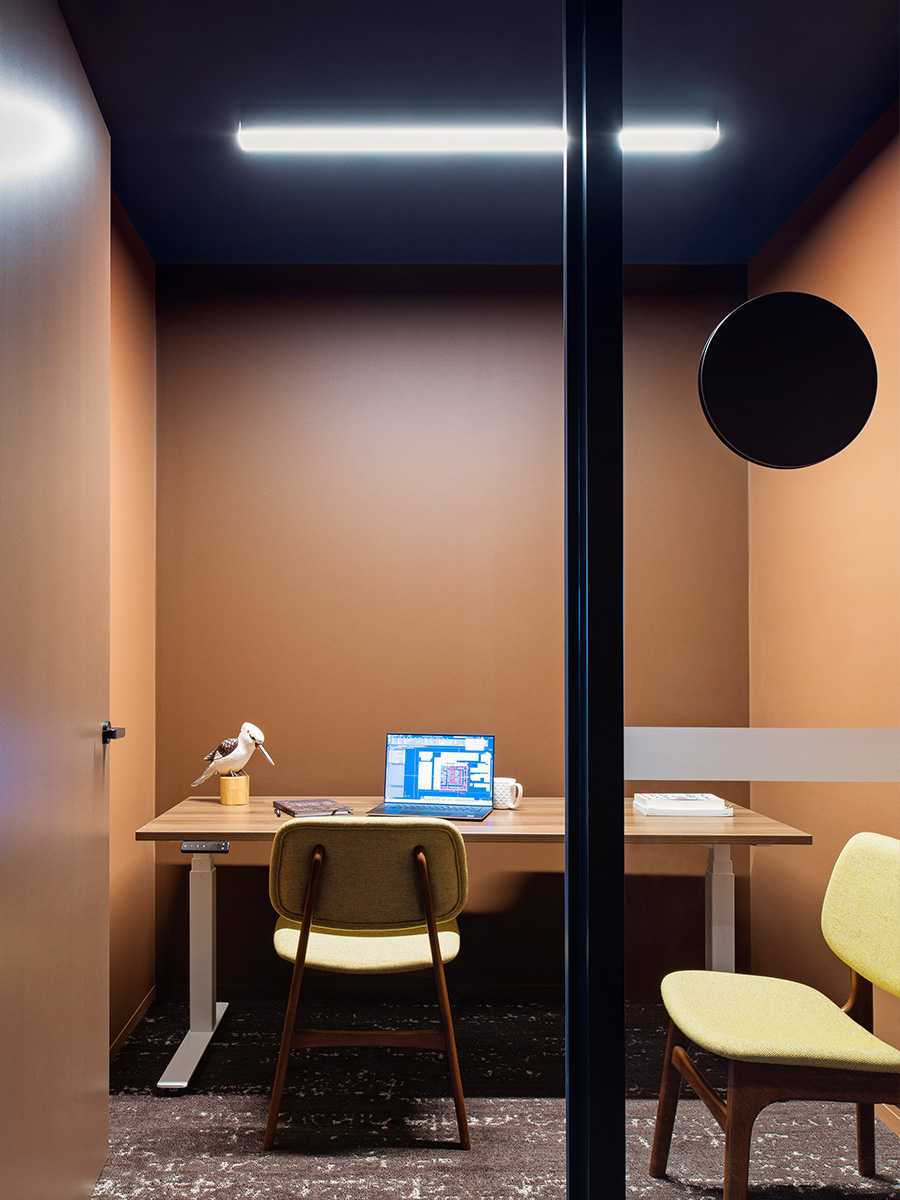
Place a cosy chair in a quiet corner of the office, giving people space to think and recharge. While this might not offer much privacy, getting up and changing your environment helps people think differently.
From joinery items to furniture hanging from the ceiling, there are plenty of different options. Movement is an underutilised tool – a rocking chair can positively affect wellbeing by reducing stress.
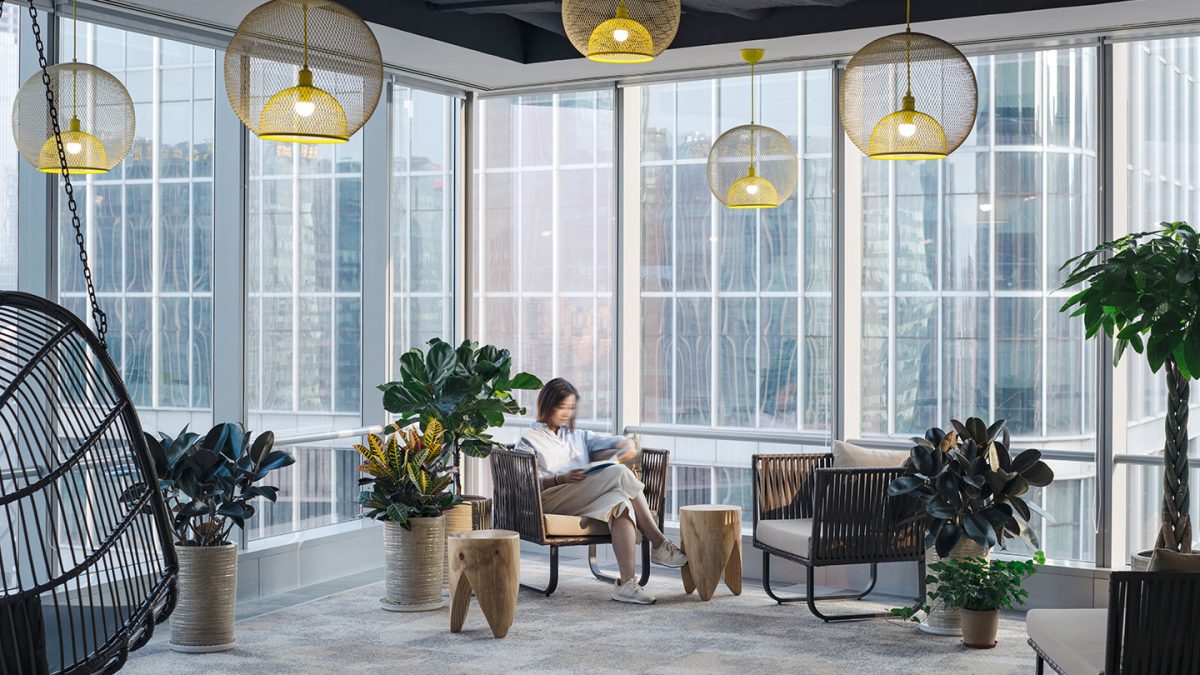
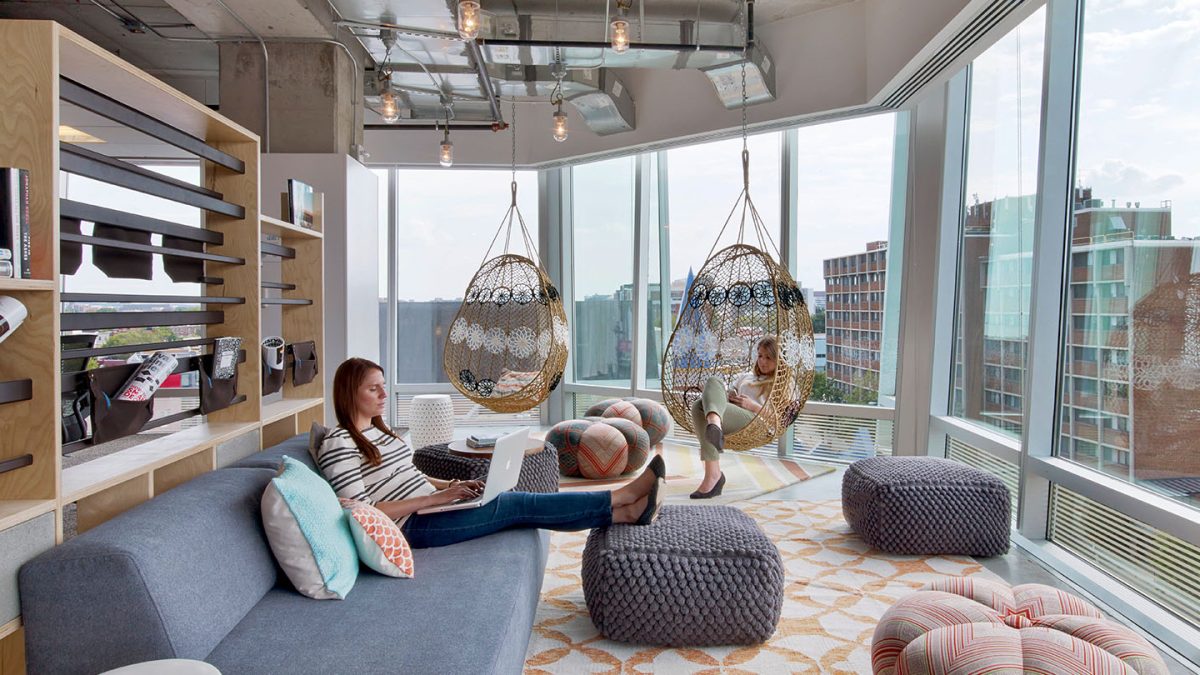
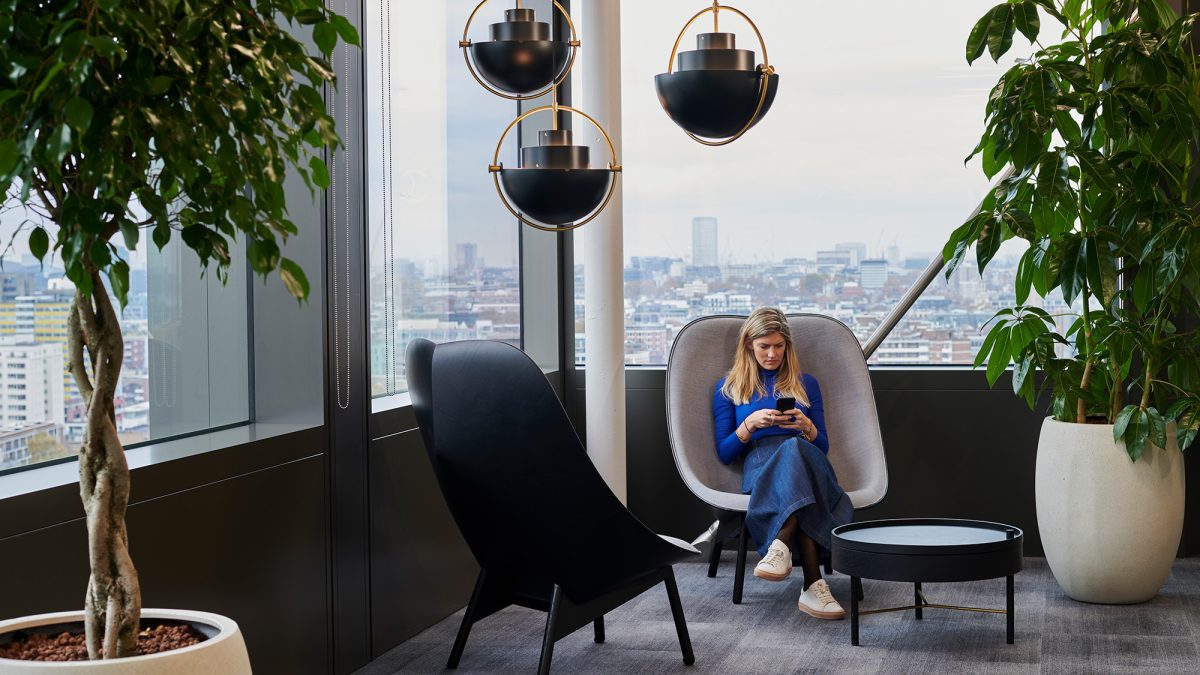
Indoor gardens or direct access to the great outdoors can provide employees with a change of scenery and fresh air. They are a proven way to promote mental wellbeing and reduce stress.
They can play a role in the community too. We’ve seen everything from grassroots planting projects to impressive sky gardens as sustainable building amenities, drawing in tenants with their green credentials.
What we see affects how we feel. Although we generally gravitate towards green spaces, surprisingly, the features of your view matter more than the content. So, a spectacular cityscape can be as rewarding as a park. When planning your office design, it’s always worth considering where the best views are, how to preserve them, and what kinds of spaces will benefit most.
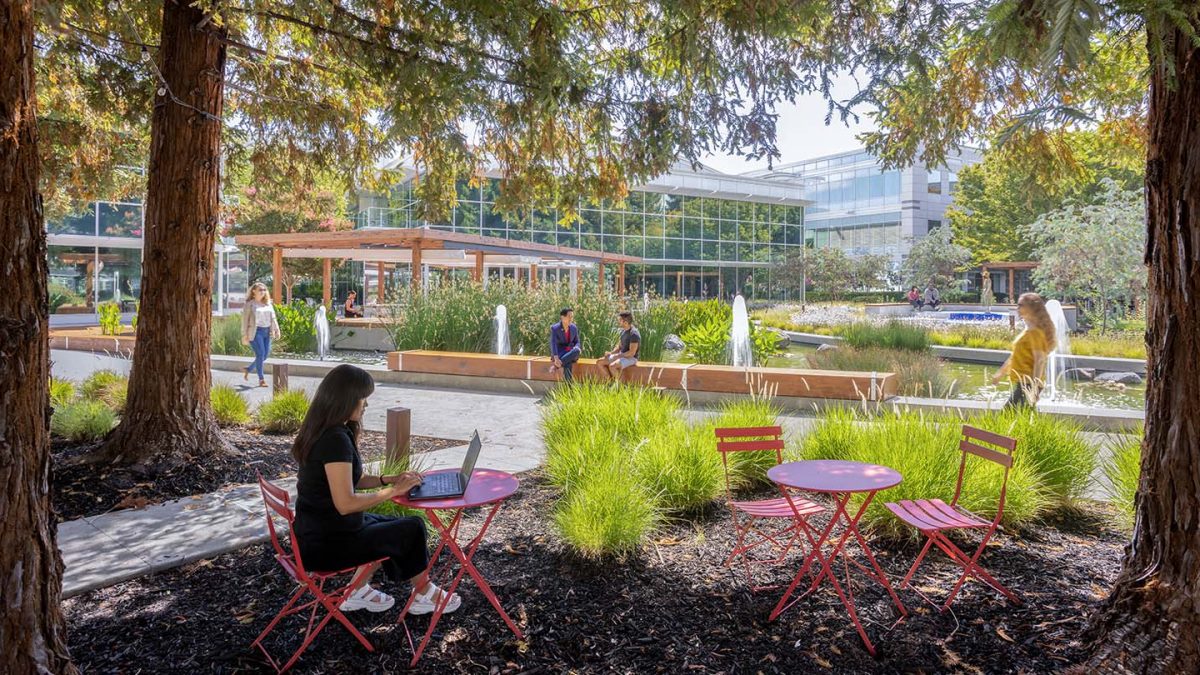
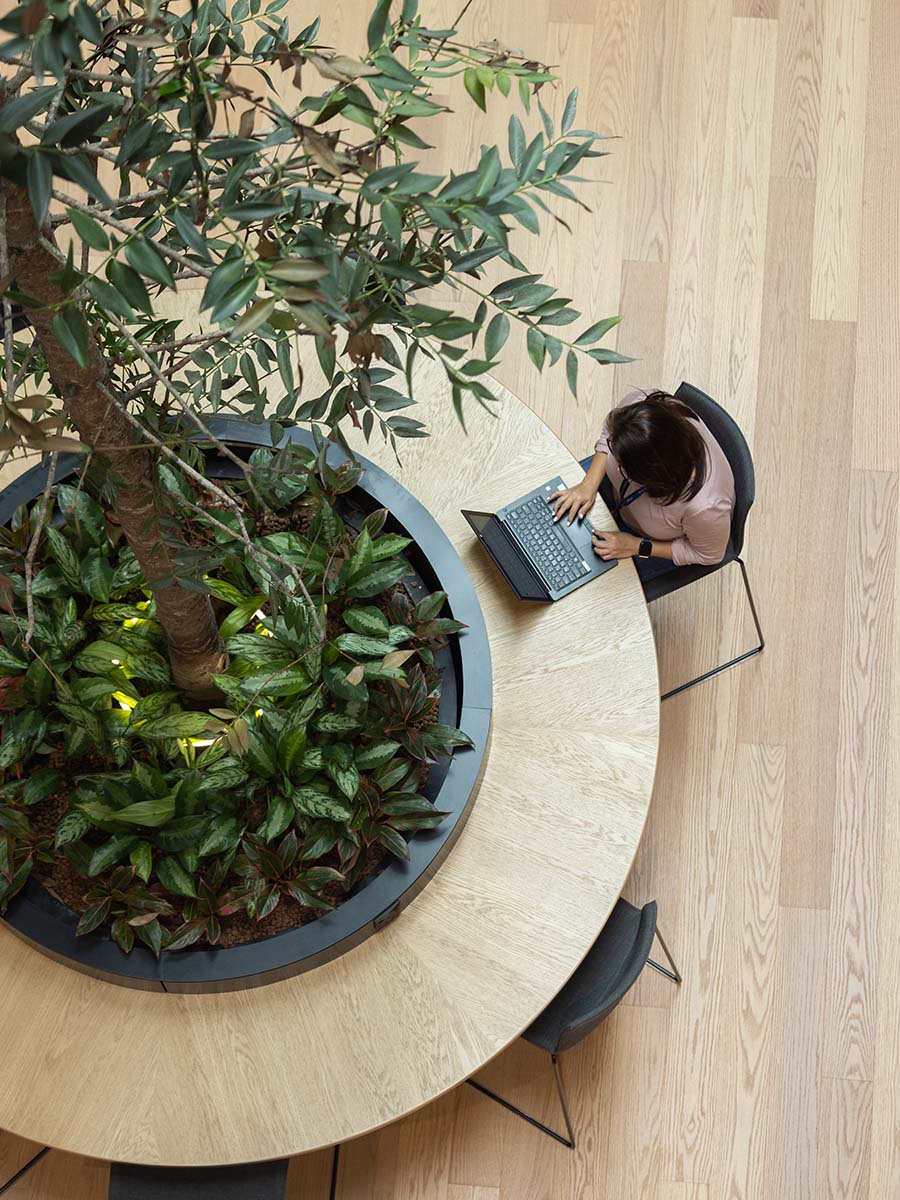
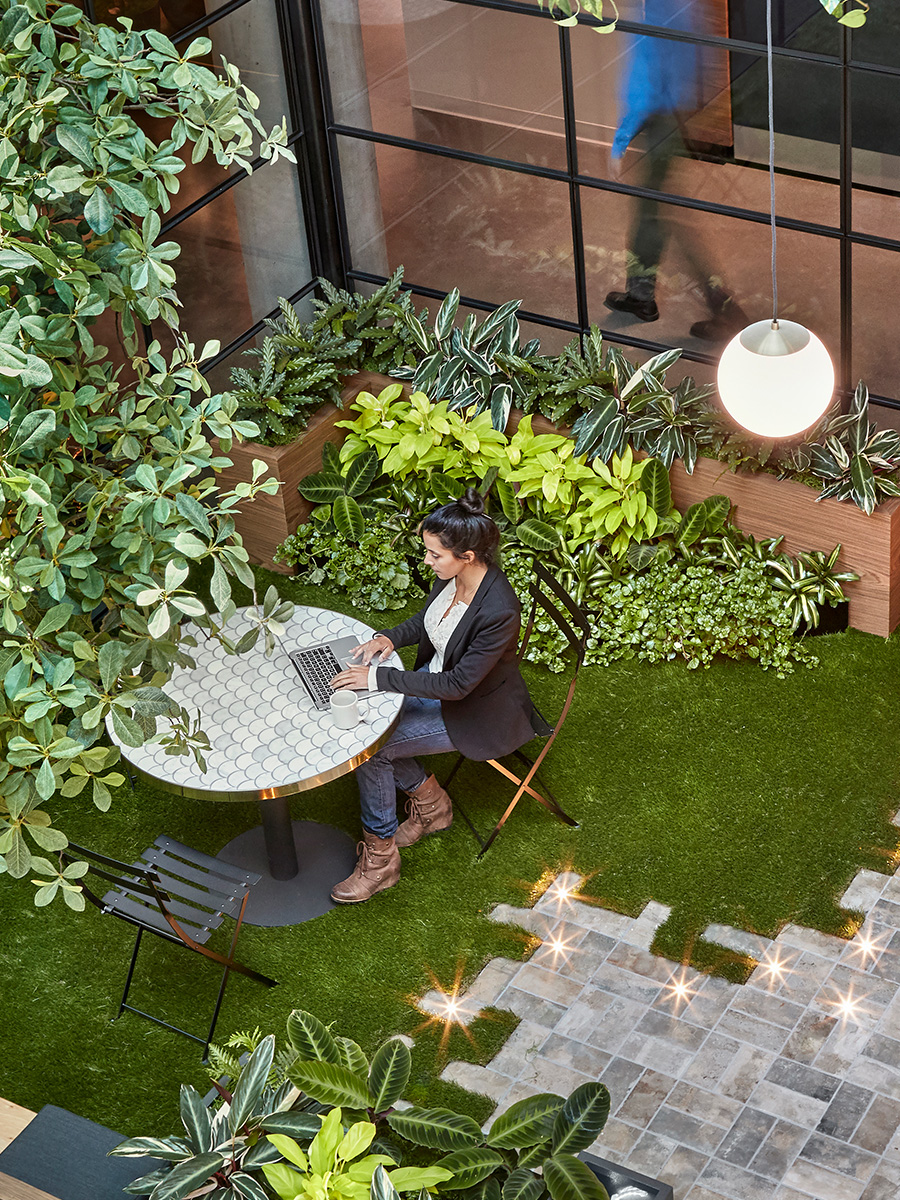
A private office is a more permanent option for employees who need quiet space. These offices offer a dedicated room for employees who need to focus on individual tasks or work on confidential projects.
However, there is a cost attached to this kind of office space planning. The more offices you have, the more partitions you need to build, which also increases your project’s carbon impact.
Although cellular office space has fallen out of fashion, planning decisions should consider what the business needs to operate effectively – not what others are doing.
We’ve seen a significant increase in shared and bookable offices. These are great options for companies working in a hybrid style, where the space is only sometimes needed.
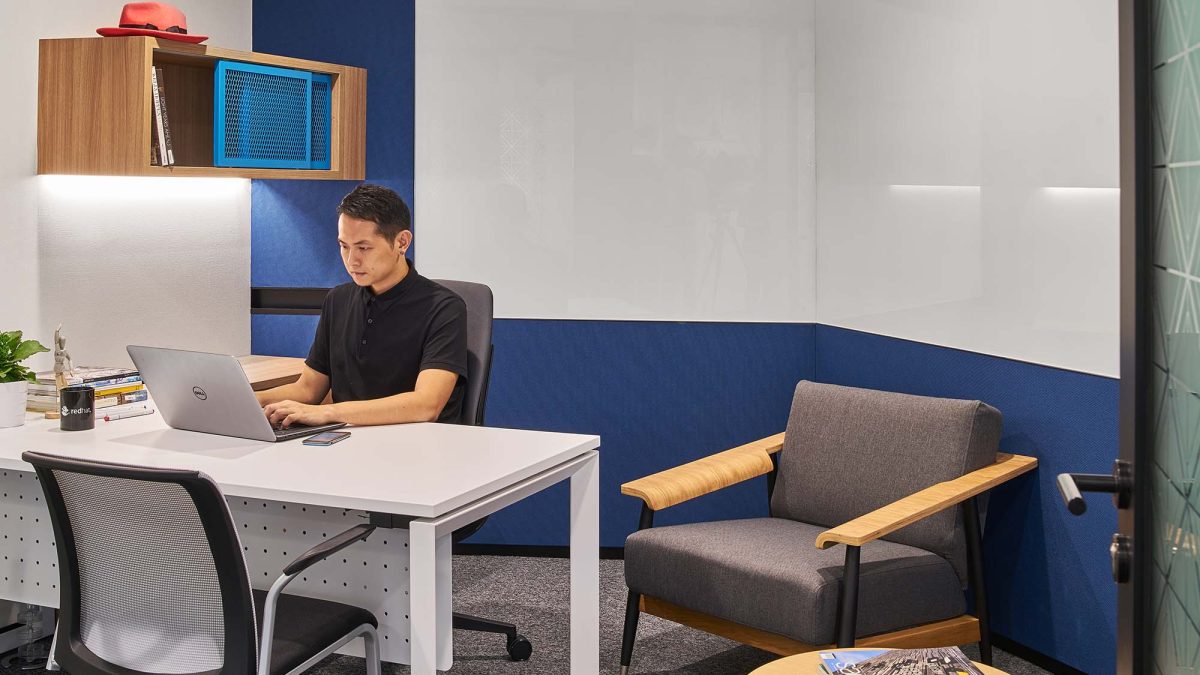
In conclusion, a well-designed workspace can significantly impact productivity. By incorporating a wide variety of focus spaces, companies can create a work environment that supports effectiveness and reduces stress and anxiety.
Reach out to our workplace strategy and design teams to craft an environment that helps your people do better work.